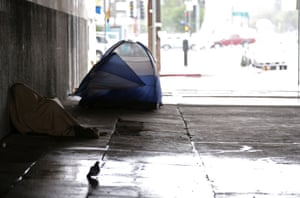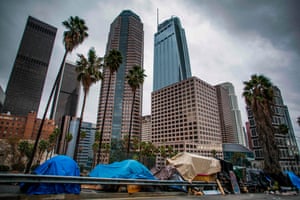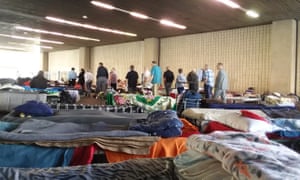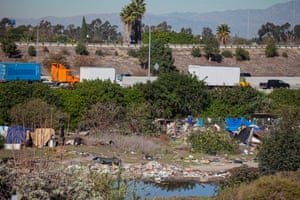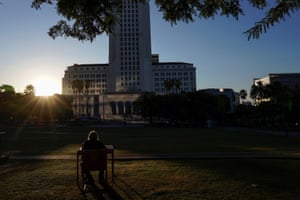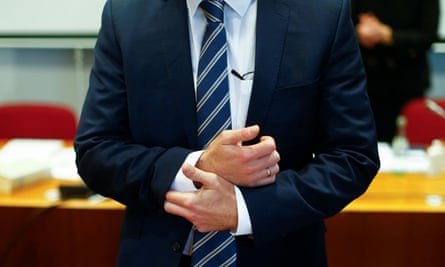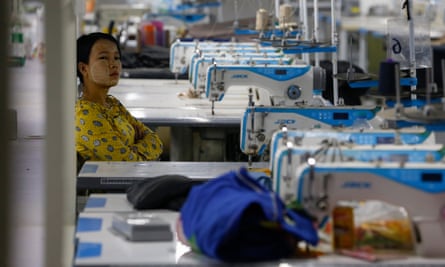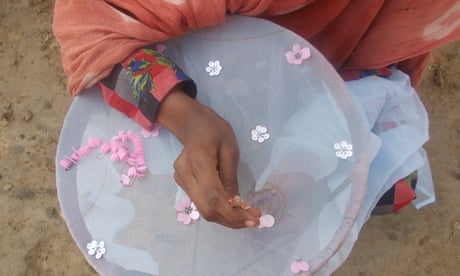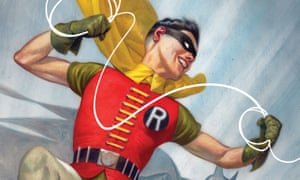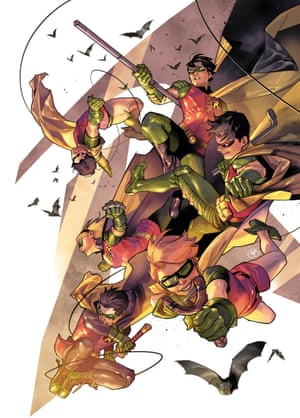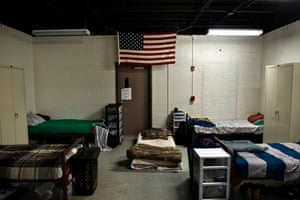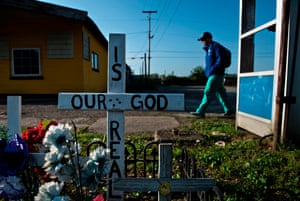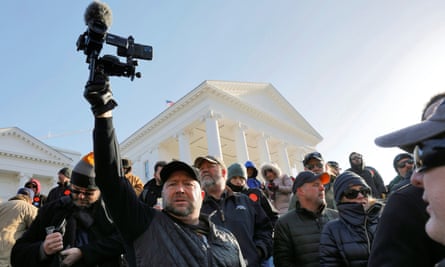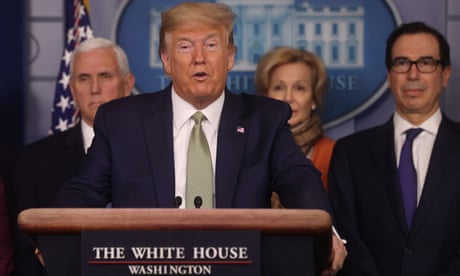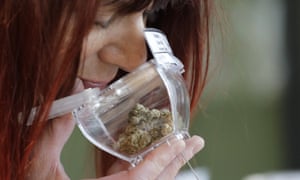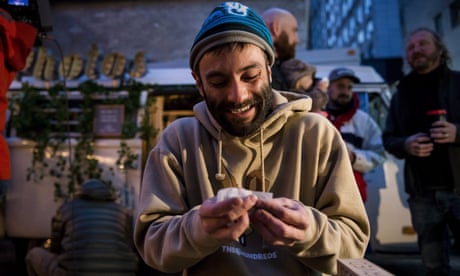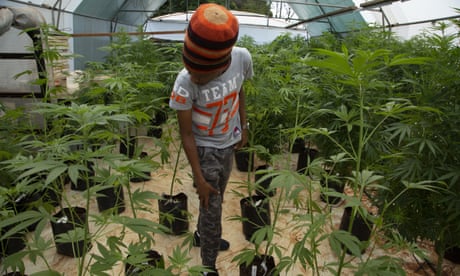Examples include 1679 pocket globe and 1730 terrestrial globe showing California as an island
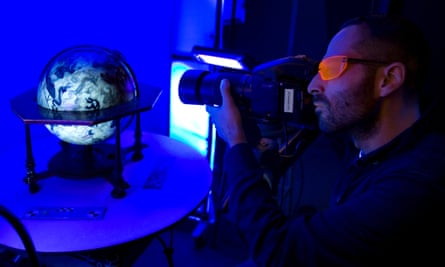
Digitally recording a globe at the British Library. Photograph: The British Library
Mark Brown Arts correspondent Published on Wed 18 Mar 2020
What better way to see the world in these travel-restricted times than from the comfort of your sofa? The British Library is this month putting on a digital display of some of its more hidden treasures, including historic globes which will be available to explore online.
The library has about 150 historic globes in its vast collection of books, manuscripts and maps. Most are so delicate they are rarely seen by visitors.
On 26 March the library will launch the first fruits of an ambitious two-year project to digitise the globes, allowing people to see them in incredible close-up detail.
“Everyone loves an old globe, don’t they,” said Tom Harper, the lead curator of antiquarian maps at the library. “When you see one you want to spin it.
“They seem really visible, accessible things … but actually original globes are really quite elusive and even mysterious. Because they were built as tactile objects original ones are really rare and often in a terrible state.
“The globes we’ve got here we have to be very protective of them. We can’t bring them out for readers to look at because they are so fragile so they are the hidden world maps and hidden star charts of the collection.”
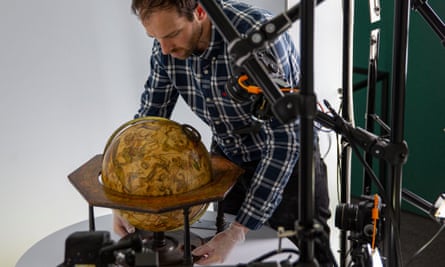
Mark Brown Arts correspondent Published on Wed 18 Mar 2020
What better way to see the world in these travel-restricted times than from the comfort of your sofa? The British Library is this month putting on a digital display of some of its more hidden treasures, including historic globes which will be available to explore online.
The library has about 150 historic globes in its vast collection of books, manuscripts and maps. Most are so delicate they are rarely seen by visitors.
On 26 March the library will launch the first fruits of an ambitious two-year project to digitise the globes, allowing people to see them in incredible close-up detail.
“Everyone loves an old globe, don’t they,” said Tom Harper, the lead curator of antiquarian maps at the library. “When you see one you want to spin it.
“They seem really visible, accessible things … but actually original globes are really quite elusive and even mysterious. Because they were built as tactile objects original ones are really rare and often in a terrible state.
“The globes we’ve got here we have to be very protective of them. We can’t bring them out for readers to look at because they are so fragile so they are the hidden world maps and hidden star charts of the collection.”

The process allows people to see close-up detail of the globes online.
Photograph: The British Library
Seven globes will go online initially, including what is possibly the earliest miniature pocket globe, made by Joseph Moxon in 1679, which would have been seen as a gentlemanly status symbol.
Other globes will include Richard Cushee’s 1730 terrestrial globe which has California as an island and the northwest of north America labelled “unknown parts”.
Harper said globes were able to tell fascinating stories about the history of discoveries. “Globes are brilliant for that. You get a sense in the 18th century, before and after Cook, of this incredible excitement about exploration, what latest things were being found all over the world.
“You can appreciate it more when you are looking at a globe, you get a physical sense of it being completely on the other side of the world which you don’t get when you look at a map.”
There will also be original celestial globes going on the website, including one from 1606 made by the Dutchman Willem Janszoon Blaeu.
These globes, which show the stars, would often have been paired with terrestrial globes, to be seen together as a 3D model of the universe.
“It was quite a profound, conceptual thing to do when you think about it,” said Harper.
“People haven’t really given enough time to them in the past, they are quite complicated things to understand.
“It is with the celestial globes that you really get so much more of the culture of the age, of the people who were looking at and making the globes.”
Library staff have worked with the digitising company Cyreal on the project for two years. Some of the globes have been photographed as many as 1,200 times to capture every aspect of their surface area. “The technology now is so much more accessible than it was five years ago.”
The globes will be available on the British Library website. There will also be an augmented reality version of the globes, available via the Sketchfab app.
Harper said there was still much to learn from historic globes and he hopes the public will help.
“We want to find out things about these globes that we haven’t noticed before. It’s not just features or places on the globe which we haven’t noticed, they have been well studied, it’s more how these features are shown, and what that tells us about the people who were looking at them. It is more the contextual history we are interested in.”
Seven globes will go online initially, including what is possibly the earliest miniature pocket globe, made by Joseph Moxon in 1679, which would have been seen as a gentlemanly status symbol.
Other globes will include Richard Cushee’s 1730 terrestrial globe which has California as an island and the northwest of north America labelled “unknown parts”.
Harper said globes were able to tell fascinating stories about the history of discoveries. “Globes are brilliant for that. You get a sense in the 18th century, before and after Cook, of this incredible excitement about exploration, what latest things were being found all over the world.
“You can appreciate it more when you are looking at a globe, you get a physical sense of it being completely on the other side of the world which you don’t get when you look at a map.”
There will also be original celestial globes going on the website, including one from 1606 made by the Dutchman Willem Janszoon Blaeu.
These globes, which show the stars, would often have been paired with terrestrial globes, to be seen together as a 3D model of the universe.
“It was quite a profound, conceptual thing to do when you think about it,” said Harper.
“People haven’t really given enough time to them in the past, they are quite complicated things to understand.
“It is with the celestial globes that you really get so much more of the culture of the age, of the people who were looking at and making the globes.”
Library staff have worked with the digitising company Cyreal on the project for two years. Some of the globes have been photographed as many as 1,200 times to capture every aspect of their surface area. “The technology now is so much more accessible than it was five years ago.”
The globes will be available on the British Library website. There will also be an augmented reality version of the globes, available via the Sketchfab app.
Harper said there was still much to learn from historic globes and he hopes the public will help.
“We want to find out things about these globes that we haven’t noticed before. It’s not just features or places on the globe which we haven’t noticed, they have been well studied, it’s more how these features are shown, and what that tells us about the people who were looking at them. It is more the contextual history we are interested in.”
